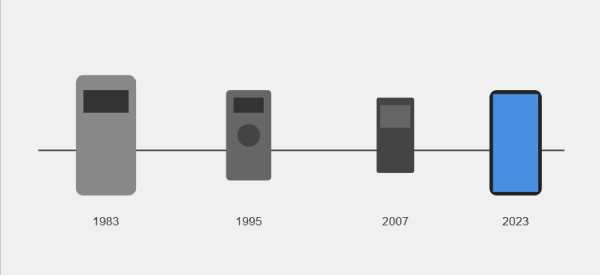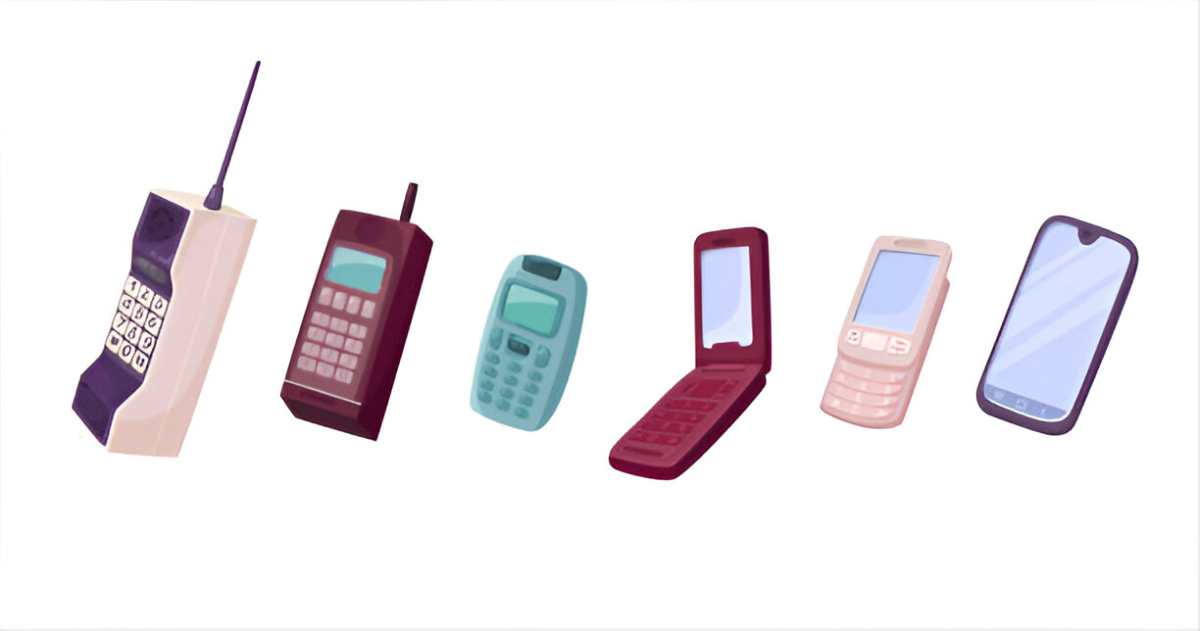The journey of mobile phones evolution one of the most rapid and transformative technological evolutions in human history. From communication devices to powerful pocket computers, mobile phones have fundamentally changed how we live, work, and connect with others.
Table of Contents
The Birth of Mobile Communication (1973-1983)
The story begins in 1973 when Motorola engineer Martin Cooper made the 1st mobile phone call using the Motorola DynaTAC prototype. This groundbreaking moment took a decade to reach consumers, with the first commercial mobile phone, the Motorola DynaTAC 8000X, launching in 1983. Weighing nearly two pounds and offering just 30 minutes of talk time, it earned the nickname “the brick” but represented a revolutionary step forward in telecommunications.
The Rise of Digital Mobile (1990s)
The 1990s marked the transition from analog to digital cellular technology. The introduction of GSM standards in 1991 enabled international roaming and better call quality. During this era, phones became notably more diminutive and more affordable. The iconic Nokia 3310, released in 2000, symbolized this period with its durability, long battery life, and the addictive game “Snake.” Text messaging emerged as a revolutionary new form of communication, forever changing how people stayed in touch.

The Smartphone Revolution (2007-Present)
Promoting the iPhone in 2007 marked the beginning of the modern smartphone era. Apple’s revolutionary device introduced the concept of an entire touchscreen interface and a rich app ecosystem. This sparked a new wave of innovation, with competitors like Samsung, HTC, and others pushing the boundaries of what mobile phones could do. The Android operating system, launched in 2008, provided an open-source alternative that enabled diverse manufacturers to compete in the smartphone market.
Today’s Mobile Landscape
Modern smartphones are powerful computing devices that have absorbed the functionality of numerous other gadgets. They serve as cameras, music players, gaming devices, navigation systems, and mobile offices. Mixing technologies like 5G, AI, and augmented reality continues to expand their capabilities. Features like facial recognition, wireless charging, and folding displays showcase how far we’ve come from the original “brick” phones.
Impact on Society
The evolution of mobile phones has profoundly impacted society. They’ve democratized access to information, enabled new forms of social interaction, and created new economic sectors. Mobile banking has revolutionized financial services in developing nations, while social media apps have transformed how we share our lives and consume information.
Looking to the Future
As we look ahead, the boundaries between phones and other devices continue to blur. Emerging technologies like augmented reality glasses, flexible displays, and enhanced AI integration suggest that mobile devices will become even more central to our daily lives. The focus is shifting toward more sustainable manufacturing processes and devices that can be easily repaired and recycled.
The journey from the first mobile phone call to today’s sophisticated smartphones spans less than 50 years, yet it represents one of the most significant technological leaps in human history. As we continue to push the boundaries of what’s possible, one thing remains clear: mobile phones will continue to evolve & shape how we interact with the world around us.

